Reactive dyes
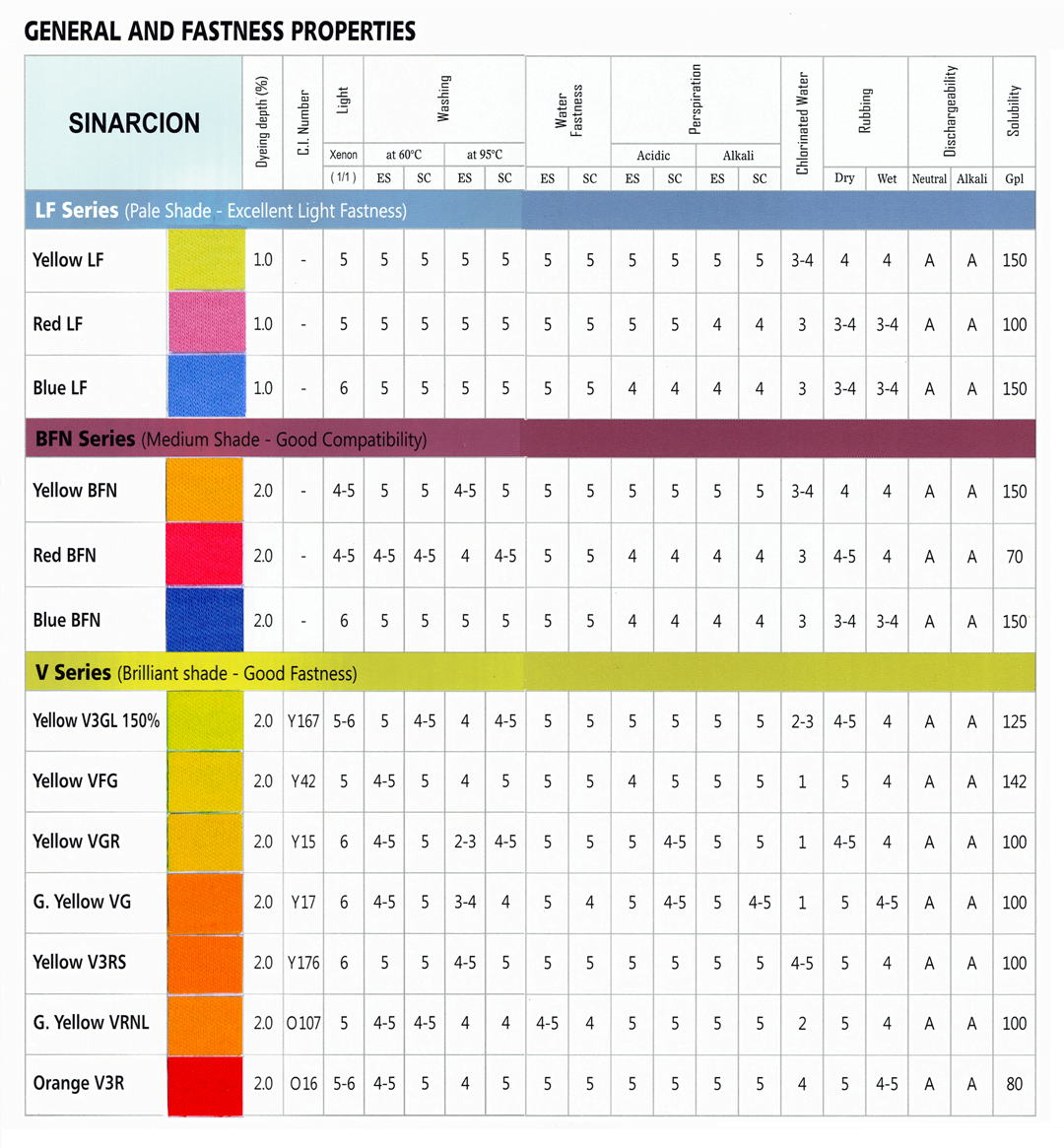
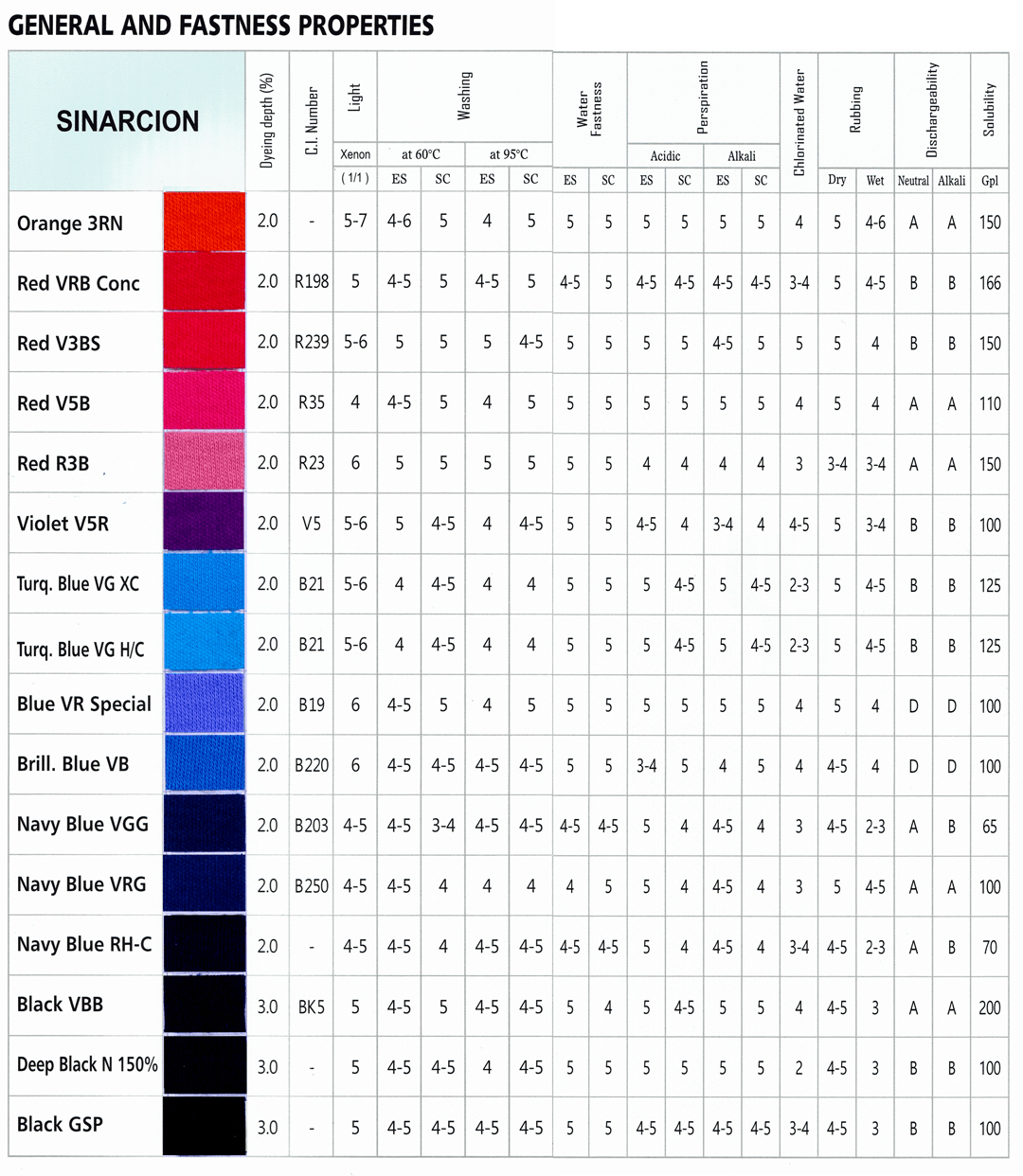
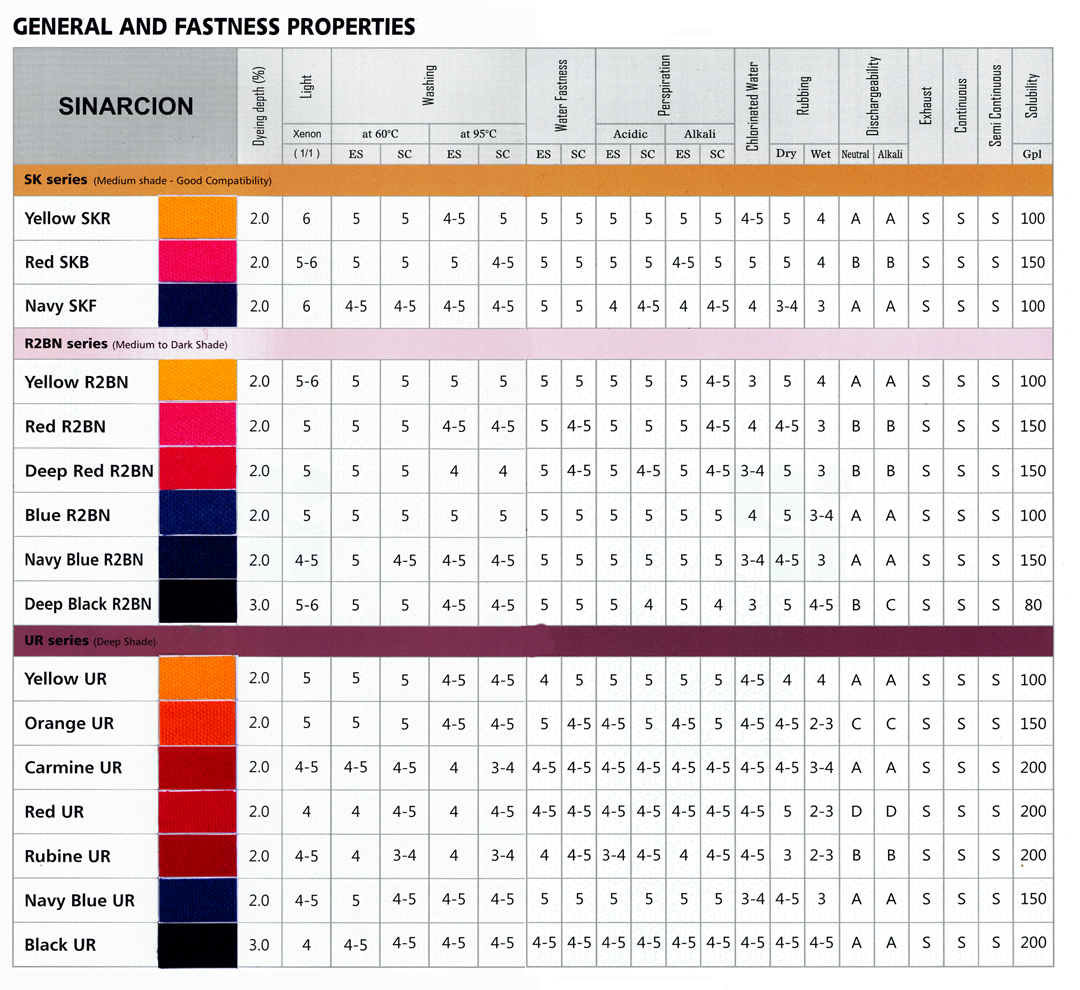
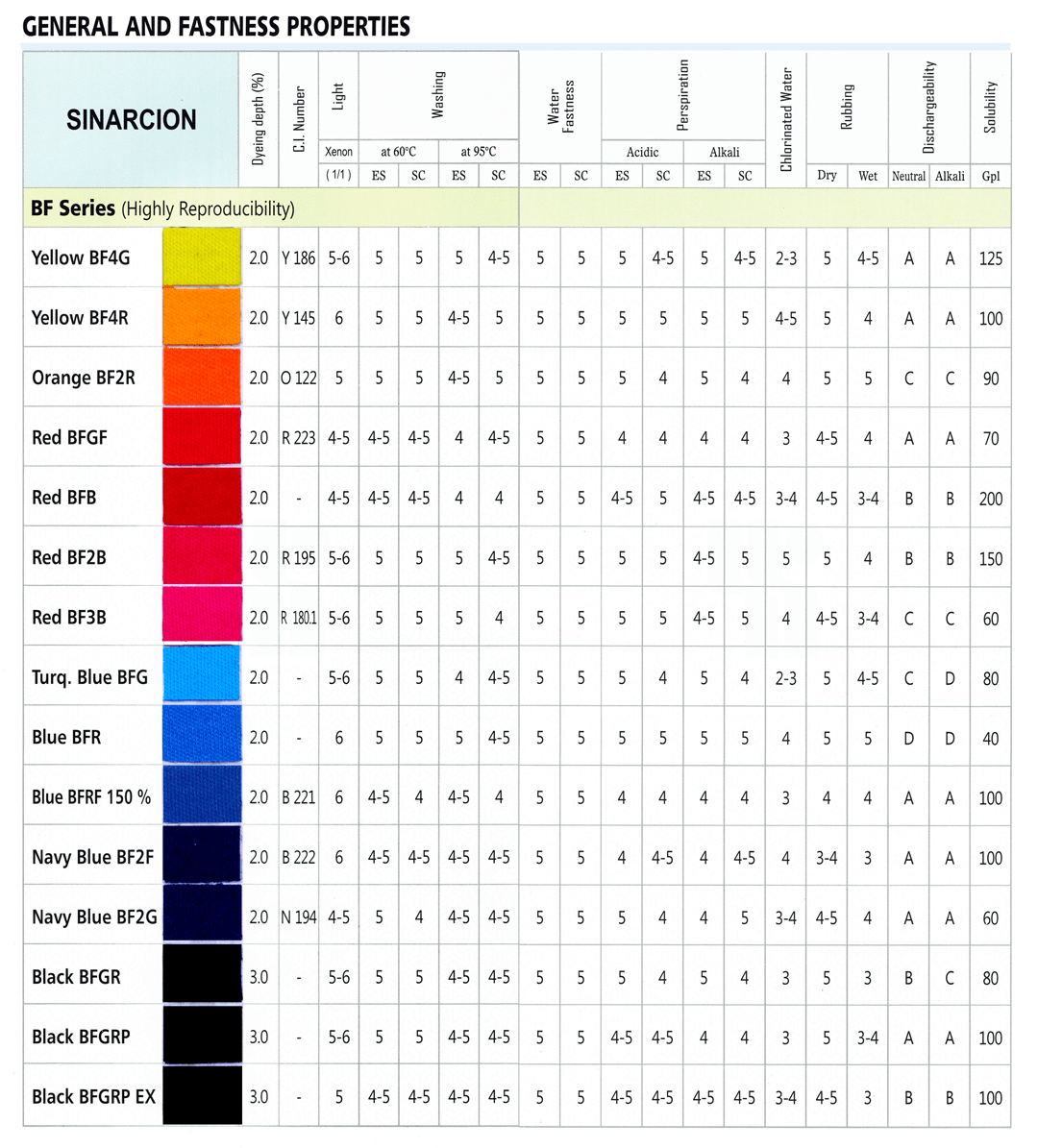
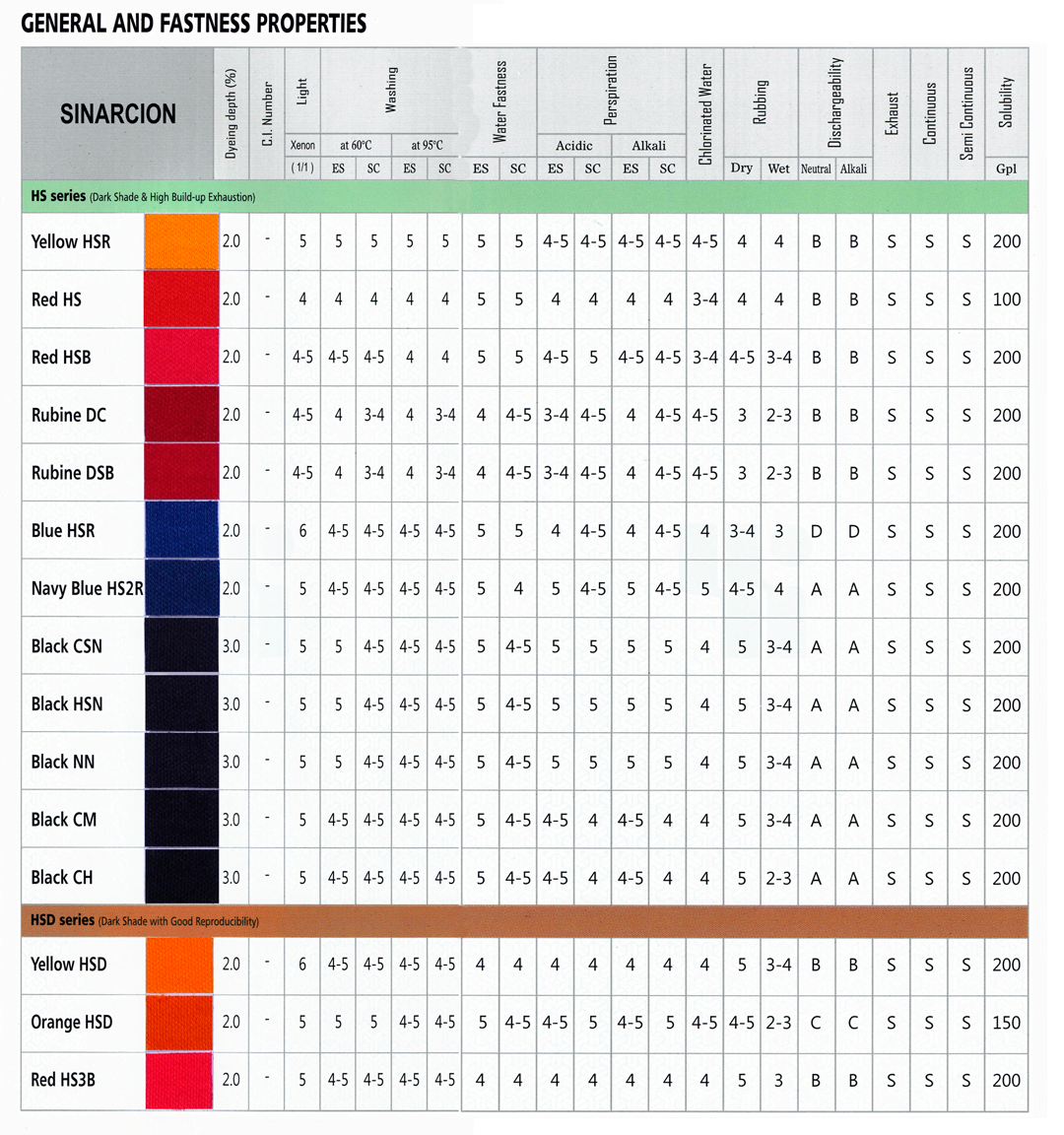
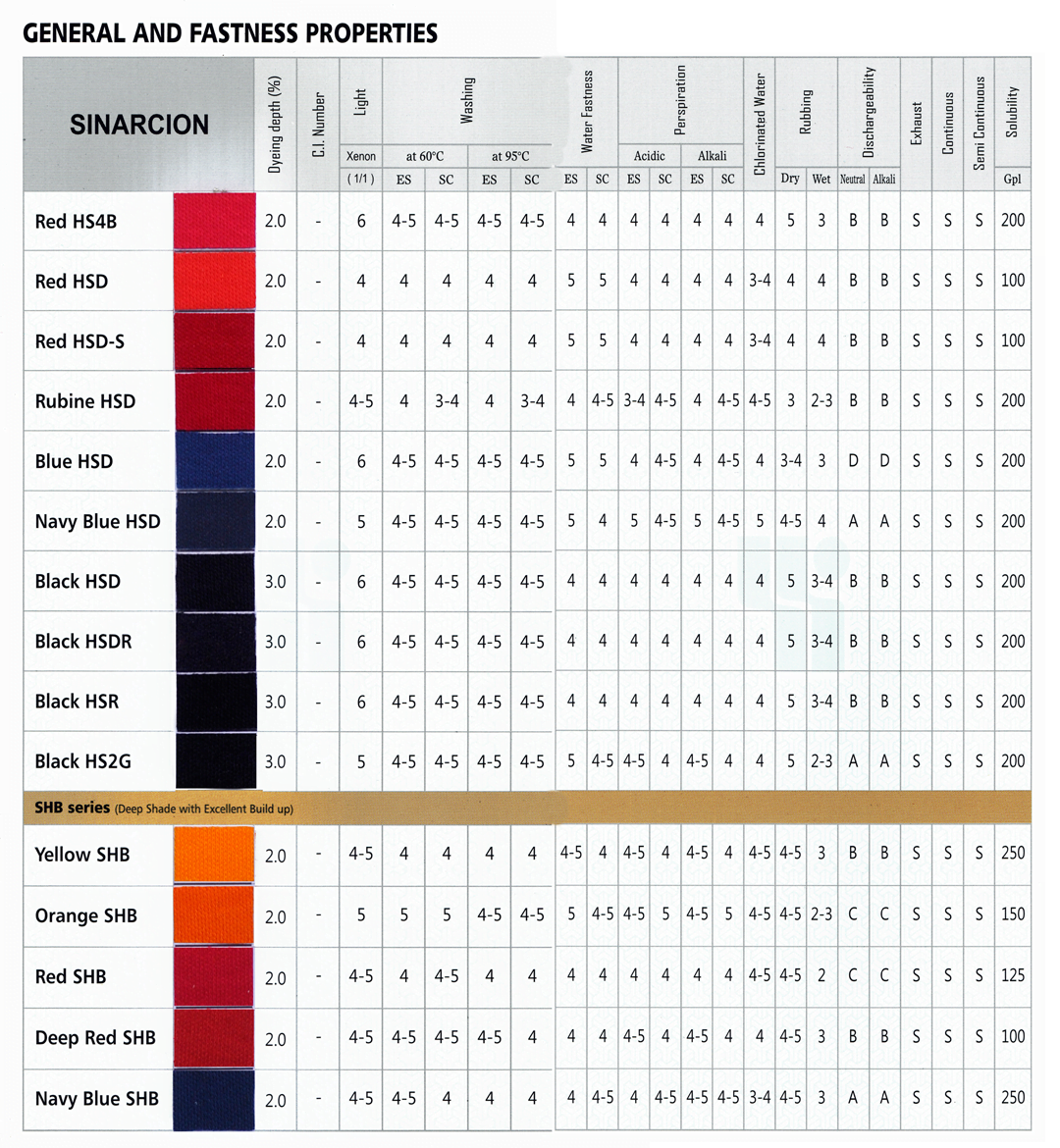
REACTIVE DYES DETAILS INFORMATION
The demand for reactive dyes, among the dyes for cellulose fibers, is increasing yearly due to its vivid colors, excellent wet fastness properties and convenient dyeing procedures.
“PT. Sinar Syno Kimia” is an ISO 9001, ISO 14001 and ISO 45001 certified dye manufacturing company in Indonesia, has developed its line of Reactive Dyes for cellulose fibers and is being sold as Sinarcion-HS, Sinarcion-R2BN, Sinarcion-LF, Sinarcion-HE, Sinarcion-BF, Sinarcion-V, Sinarcion-P and Sinarcion-C and have gained worldwide approval for its quality. Recently we have worked out to develop new range of reactive dyes and we have launched Sinarcion HSD and SDS series.
Technical Research Center of The company:
PT. Sinar Syno Kimia’s Technical Research Center has prepared this technical information booklet to assist the customers in using Sinarcion dyes. The properties of reactive dyes, dyeing methods and general properties have been included so that this technical information may be effectively utilized. We hope this literature may be of useful reference. We sincerely thank all our customers for using our Sinarcion Dyes.
Sinarcion SK Series Dyes:
Dyes with increased build-up properties. Suitable for achieving deeper shade with good fastness to fulfill global merchant’s fastness requirements. The series recommended for Continuous, Discontinuous (Exhaust) and Semi Continuous (CPB) process
Sinarcion R2BN Series dyes:
Multifunctional dyes with excellent compatibility, good fastness, good build-up, provide economical trichromatic for medium to dark shade dyeing in reliable application. Recommended for Continuous, Discontinuous (Exhaust) and Semi Continuous (CPB) process. The series recommended for Continuous, Discontinuous (Exhaust) and Semi Continuous (CPB) process.
Sinarcion HS Series dyes:
New series with modified reactive functional group have excellent build up properties; provide good reproducibility and productivity improvement in deep shade dyeing. The series recommended for Continuous, Discontinuous (Exhaust) and Semi Continuous (CPB) process.
Sinarcion HSD Series Dyes:
New series with modified reactive multifunctional dyes for medium to deep shades,
• Excellent Build-up properties
•Good reproducibility and high fixation value
•Provide productivity improvement in deep shade dyeing
•Low sensitivity to changing dyeing parameters
•Versatile application:
– Exhaustion with Isothermal dyeing application
– Semi-continuous (CPB)
– Continuous
Good wash off & Less color in waste water.
The series recommended for Continuous, Discontinuous (Exhaust), Semi Continuous (CPB) process and Printing application.
Sinarcion SDS Series Dyes:
Dyes with increased build-up properties. Suitable for achieving deeper shade with good fastness to fulfill global merchant’s fastness requirement. The series recommended for Continuous, Discontinuous (Exhaust), Semi Continuous (CPB) process and Printing application.
3. EXHAUST DYEING METHODS:
Pretreatment of the preparation of goods for dyeing and printing is far more important than the production of white goods. In order to make the material more absorbent, all sizing agents, such as starch, starch derivatives should be removed completely. Singeing, desizing, scouring, bleaching, mercerizing are the steps which are taken for treating the material before dyeing. Mercerized material gives deep and brilliant shade than unmercerized material.
Constant Temperature Method:
This method is suitable for dyeing regenerated fibers or mercerized cotton yarn or fabrics, where level dyeing is difficult, in dyeing machines where the dyebath is circulated or hank dyeing machines. Use of dyes with good levelling properties is recommended.
SALT AND ALKALI REQUIREMENTS
(1) Inorganic Salt:
Inorganic salts such as anhydrous Glauber salt, crystalline Glauber salt or common salts are used as electrolytes. Glauber’s salt may contain material such as alkali, and bay salt or rock salt may contain large amounts of impurities or metals. Care must be taken as precipitation on the fabric may occur, if metals are not removed. The amount of anhydrous Glauber salt used in the dip dyeing of cellulose fibers with Sinarcion reactive dyes depends on the dye, substrate, and concentration of dye bath, liquor ratio or temperature of dyeing. The following table shows the amounts of anhydrous Glauber salt or common salt generally used.
(2) Alkali:
Sodium Carbonate is generally used with reactive dyes but tertiary Sodium Phosphate, Caustic Soda and Sodium Carbonate are also used. Use of Sodium Carbonate along with Caustic Soda is recommended. When Caustic Soda is used by itself, alkalinity is high and control of pH is difficult, causing changes in color. The color yield may also decrease to result in poor reproducibility. The amount of alkali used with Sinarcion reactive dyes depend on the dye, substrate, and concentration of dye bath, liquor ratio, and temperature of dyeing. The following recipe may be used.
Depth | Glaber Salt or Common Salt (g/l) | Alkali (g/l) |
Fixing Time (min) | |||
Unmercerized Cotton | Mercerized Cotton/ Viscose Rayon. | Soda ash | Soda ash+Custic soda | Na3Po4 | ||
<0.5% | 20 | 10 | 10 | 5+0.5 | 6 | 30 |
0.5-1.0% | 30 | 20 | 15 | 5+0.5 | 6 | 45 |
1.0-2.0% | 40 | 30 | 20 | 5+1.0 | 8 | 50 |
2.0-3.0% | 50 | 40 | 20 | 5+1.0 | 8 | 60 |
3.0-4.0% | 60 | 50 | 20 | 5+1.0 | 8 | 60 |
4.0-5.0% | 70 | 60 | 20 | 5+1.0 | 10 | 60 |
5.0-6.0% | 80 | 70 | 20 | 5+2.0 | 10 | 60 |
>6.0% | 80 | 70 | 20 | 5+2.0 | 10 | 60 |
3) Sequestering Agents:
Generally 0.5-1.0 g/l Sodium Hexametaphosphate is used or Sodium Phosphate (pH:5) may be used to control the pH at the same time. It is best to avoid using strong sequestering agents or EDTA, as they may cause discoloration of Reactive dyes containing metals.
AFTER-TREATMENT PROCESSES:
1. Washing:
Winch, hank or package dyeing machines:
Unfixed dyes must be completely removed to enhance fastness.
The following is a typical washing procedure:
Cold rinsing : 20-30 °C x 5-10 min.
Acid Neutralization: 2-4 ml/l Acetic Acid ,40-50°C x 5-10 min.
Hot Rinsing: 70°C x10 min (2-3 times as necessary)
Soaping: 1-3 g/l anion/nonion soaping agent, 95-100 °C x20 min
Warm Rinsing: 70-80 °C x 10 min
Cold rinsing: 20-30°C x 5-10 min.
Prior to fixation or softening after treatments efficiency of the soaping process must be evaluated. A sample is taken after the soaping process, inserted between two undyed cotton fabrics and hot pressing is carried out. Soaping treatment must be repeated if any dye is stained on to the undyed fabrics.
2. Fixation Treatment
Fixation treatment is generally carried out after soaping to enhance the wet fastness. The following criteria must be met in the selection of the fixing agents.
-Must not change in color
-Decrease in light, rubbing, perspiration and chlorine fastness must not be present.
Generally in exhaustion dyeing, dyed fabrics are treated with 1-4 % (o.w.f) fixing agents for 10-20 min at 50-60 °C. When unfixing is required due to discoloration or for modification of color, the following acid treatment may be carried out.
Acetic Acid (48 %): 3-6 cc/l
Or hydrochloric acid or phosphoric acid 1-3 cc/l
Temperature and time: 20-30 min at 80 °C
TEST METHOD OF FASTNESS PROPERTIES:
(1) Light
ISO-105-B02 : Xenon arc lamp
AATCC 16E 20AFU : Xenon arc lamp
(2) Washing
ISO-105-C03 : 5G/L Neutral Soap
2 G/L anhydrous sodium carbonate
LR : 50 : 1
60 °C x 30 min
ISO-105-C04 95 °C x 30 min
10 steel balls in each container
ISO-105-C06 : Commercial laundering
(3) Oxidative Bleach
M&S C10A : 10 g/L detergent ECE non phospate
12 g/L sodium perborate tetrahydrate
1.8 g/L Tetra-acetyle ethylene diamine
vlot 1:100
time 30 minutes
(4) Water
ISO-105-E01: 37 °C + 2°C x 4 hours
(5) Perspiration
ISO-105-E04
Acid: 5 g/l Naci,
2.2 g/l NaH2PO4.2H2O
0.5 g/ L-Histidine,
pH = 5.5, 37 °C, 4 hours.
Alkaline : 5 g/l NaCl,
5 g/l Na2HPO4,
0.5 g/l L-Histidine,
pH = 8.0, 37 °C, 4 hrs
(6) Chlorinated Water
ISO-105-E03 : 0.01 % Available chlorine
pH = 7.5 (+-) 005
27 °C + 1°C x 60 min.
(7) Rubbing
ISO-105-X12 : Rubbing tester
Wet and Dry testing.
Abbreviations:
ES = Effect on Shade
SC=Stain on Cotton
W=weaker
R= Redder
Dischargeabilty :
A= Dischargeable to high white
B= Dischargeable to normal white
C= Only suitable for color discharge
D= Not Suitable.
Suitability:
S = Suitable
LS= Less Suitable
NS = Not Suitable
All the above information is based on our trial conducted at various instances. This is being provided for guidelines without obligations. Customers are encouraged to carry out trials at their end to suit their operations and conditions.
All standard safety precautions applicable should be followed while handling as with all other dyes and chemicals.
